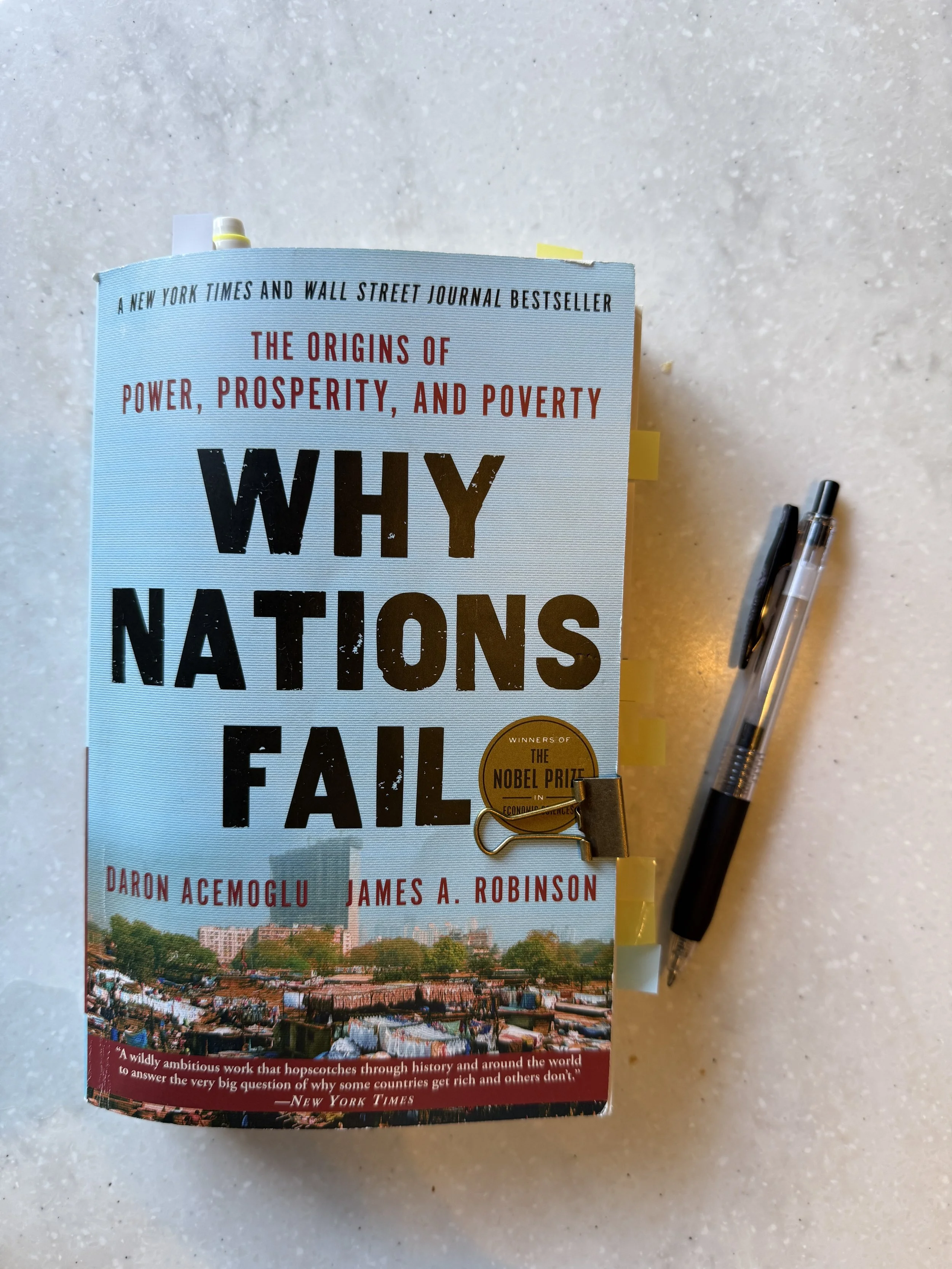The problem with easy answers: rethinking “Why Nations Fail”
There’s something elegant about the premise of Why Nations Fail. Daron Acemoglu and James A. Robinson argue that prosperity stems from inclusive institutions: systems that distribute power, encourage participation, and keep elites in check. Countries with extractive institutions, by contrast, stagnate. It’s a clean model. Maybe too clean.
The book builds its case through historical contrasts—North and South Korea, the United States and Mexico, Botswana and Zimbabwe—illustrating how institutions shape divergent paths. At first, these vignettes are compelling. But over time, they blur together. Different story, same conclusion. The structure becomes formulaic, more focused on reinforcing the thesis than on examining its limits. It starts to read like someone trying to win an argument in a very long group chat.
The framework also struggles with complexity. Take the United States. It is held up as a model of institutional inclusivity: elections, courts, constitutional checks. Yet inequality is rising, trust in institutions is falling, and political polarization is turning existential. If inclusive systems can produce extractive outcomes, are they still inclusive? Or is participation without power just another form of exclusion?
Colonialism is acknowledged, but only briefly. The authors admit that many nations inherited extractive institutions from imperial rule. But they do not fully explore how those systems were designed not just to govern, but to dominate. From debt structures to fractured borders to trade regimes tilted toward former colonizers, the legacy of colonialism still shapes global inequality. It is mentioned, then moved aside—like an awkward dinner guest no one knows quite how to seat.
The book talks a lot about inclusion, but never stops to ask: inclusion for whom? It treats institutions as neutral structures, but power is not distributed equally within them. Women’s unpaid labor, Indigenous land dispossession, the economic marginalization of entire communities—none of that enters the picture. You are either inside the system or outside it. What happens inside, and who actually benefits, is left unexamined.
Even the economics feels suspiciously neat. Once you install the right institutions, prosperity is supposed to follow. But capitalism is not a vending machine. You don’t insert democracy and automatically receive innovation and upward mobility. Sometimes you just get rent-seeking, monopolies, and a housing crisis.
And then there is China. The authors predict it will fail because it is authoritarian. Maybe they are right. But the prediction feels more like a wager than a conclusion. China’s long-term trajectory is uncertain, but so is the idea that liberal democracy is the only viable route to prosperity. If the model cannot accommodate alternatives, perhaps it is the model—not the country—that needs to be reconsidered.
Why Nations Fail is a confident book, but not always a curious one. It explains a lot—until it doesn’t. In a world full of contradictions, its biggest weakness may be its need for certainty.

